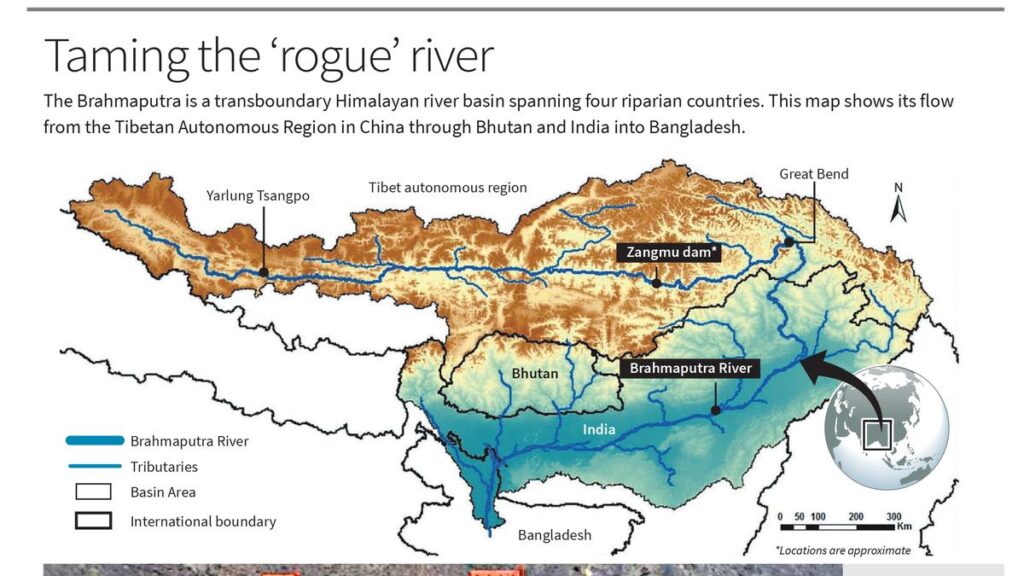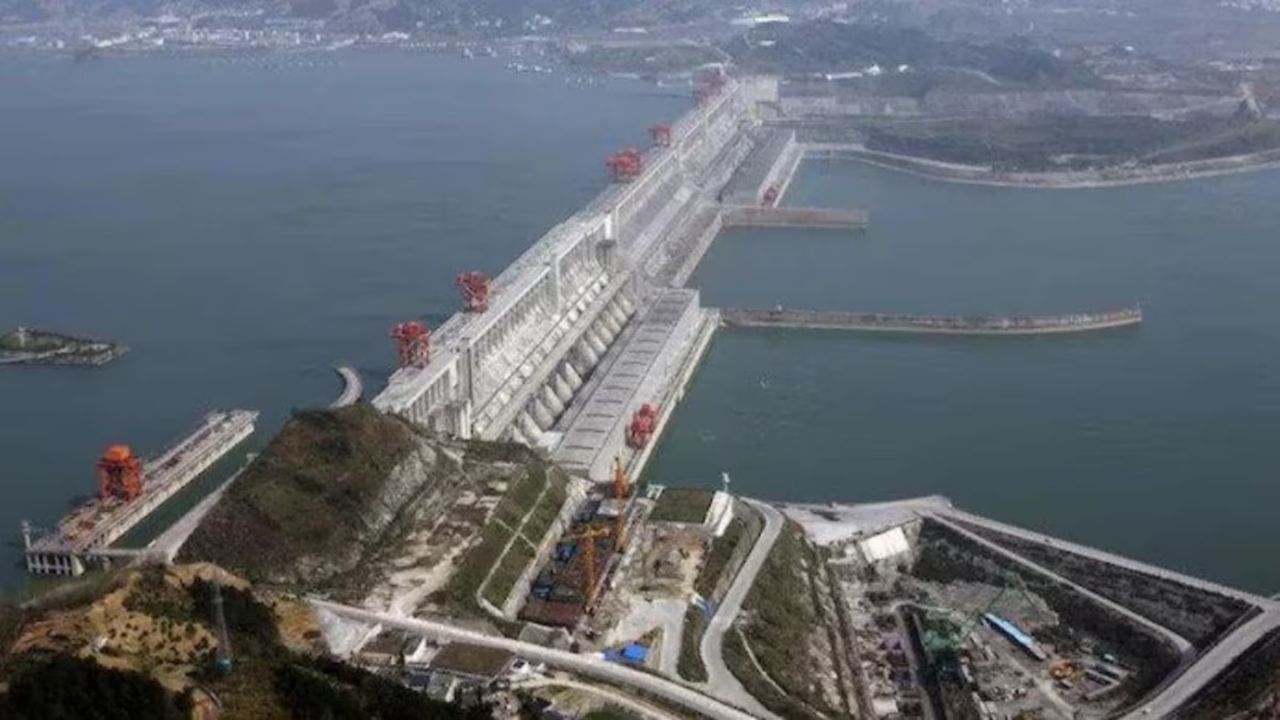China’s construction of the world’s largest hydropower dam on the Yarlung Zangbo River, known as the Brahmaputra in India, has raised significant concerns for India, particularly in Arunachal Pradesh and Assam.
What Is the Brahmaputra Dam Project?
In December 2024, China approved a $167-billion hydropower dam in Tibet’s Medog County, with construction starting in July 2025. Located at the “Great Bend” where the Yarlung Zangbo enters India as the Brahmaputra, this dam will be three times larger than China’s Three Gorges Dam. It aims to produce 300 billion kilowatt-hours of electricity annually to support China’s carbon neutrality goals.
Also See: Wimbledon Winners List (1968–2025): Complete Champions by Year
Will it affect Arunachal Pradesh and Assam?
Arunachal Pradesh
- Geography and Importance: Arunachal Pradesh, India’s northeasternmost state, borders China’s Tibet Autonomous Region, Bhutan, and Myanmar. The Brahmaputra, known as the Siang in Arunachal, flows through the state before entering Assam. The state’s mountainous terrain and rivers are vital for its agriculture, fisheries, and hydropower potential.
- Border Tensions: China claims Arunachal Pradesh as “South Tibet,” escalating geopolitical tensions. The dam’s location, just 50 km from the India-China border, is seen as a strategic move. Arunachal Pradesh Chief Minister Pema Khandu called it a “ticking water bomb” due to flood risks.
- Recent Issues: Arunachal has faced severe flooding in 2025, with 12 deaths and over 33,000 people affected across 24 districts due to heavy rains. The dam could worsen these challenges by altering water flow.
- India’s Response: India is planning a $1-billion hydropower dam in Arunachal’s Upper Siang region to counter China’s project, aiming to buffer sudden water releases and ensure water security.
Assam
- Geography and Importance: Assam, located south of Arunachal Pradesh, depends heavily on the Brahmaputra for agriculture, fishing, and transportation. The river supports millions of livelihoods in the state’s fertile plains.
- Flood Vulnerability: Assam has faced devastating floods in 2025, with over 78,000 people affected across 15 districts and 11 deaths reported. The Brahmaputra often exceeds danger levels during monsoons, and China’s dam could intensify flooding risks.
- Local Concerns: Assam’s Chief Minister Himanta Biswa Sarma downplayed the dam’s impact, stating that over 70% of the Brahmaputra’s water comes from Bhutan, Arunachal, and local rainfall. However, experts and locals fear reduced dry-season flow and sudden water releases.

Should this dam be a concern?
Impact on Arunachal Pradesh and Assam
- Water Flow Control: China could reduce water flow during dry seasons, affecting farming and fisheries in both states. Arunachal’s Chief Minister warned the dam could dry out 80% of the river’s flow in the state.
- Flood Risks: Sudden water releases during monsoons could cause catastrophic floods in Assam and Arunachal, damaging crops, homes, and infrastructure. Past floods in 2000, allegedly triggered by Chinese water releases, destroyed bridges in Arunachal.
- Environmental Damage: The dam, located in the earthquake-prone Himalayas, could harm ecosystems, disrupt glaciers, and alter monsoon patterns critical to both states’ agriculture.
- Geopolitical Tensions: The dam’s proximity to the disputed border fuels fears of China using water as a strategic tool, heightening India-China tensions.
Response by India
India is addressing the issue through:
- Counter-Dam: A proposed dam in Arunachal’s Upper Siang to regulate water flow and support India’s renewable energy goals.
- Diplomacy: India has urged China to share hydrological data via the 2006 Expert Level Mechanism, though past non-cooperation during the 2017 Doklam standoff raises doubts.
- Infrastructure Push: Arunachal is enhancing border infrastructure, including roads and bridges, to strengthen security amid tensions with China.
Claims by China
China insists the dam is a “run-of-the-river” project that won’t store or divert water, claiming it will:
- Protect the environment.
- Boost Tibet’s economy.
- Have no downstream impact.
However, Indian experts question these claims, citing China’s Mekong River dams, which reduced water flow to downstream countries.
Relevance
The Brahmaputra is critical for Arunachal Pradesh and Assam, supporting agriculture, fisheries, and livelihoods. Posts on X highlight fears of China’s dam as a “strategic provocation,” with concerns about flooding and water scarcity. Without transparent cooperation, the dam could strain India-China relations and harm millions in these states.
Conclusion
China’s Brahmaputra dam poses significant risks for Arunachal Pradesh and Assam, from potential floods to water scarcity and environmental damage. While India is taking steps like building a counter-dam, regional cooperation is essential to protect these states’ ecosystems and communities. Stay updated on this critical issue impacting Northeast India!
Also See: Top Indian CEOs Leading Global Companies in 2025
Also See: Kaladan Project: Strengthening India-Myanmar





